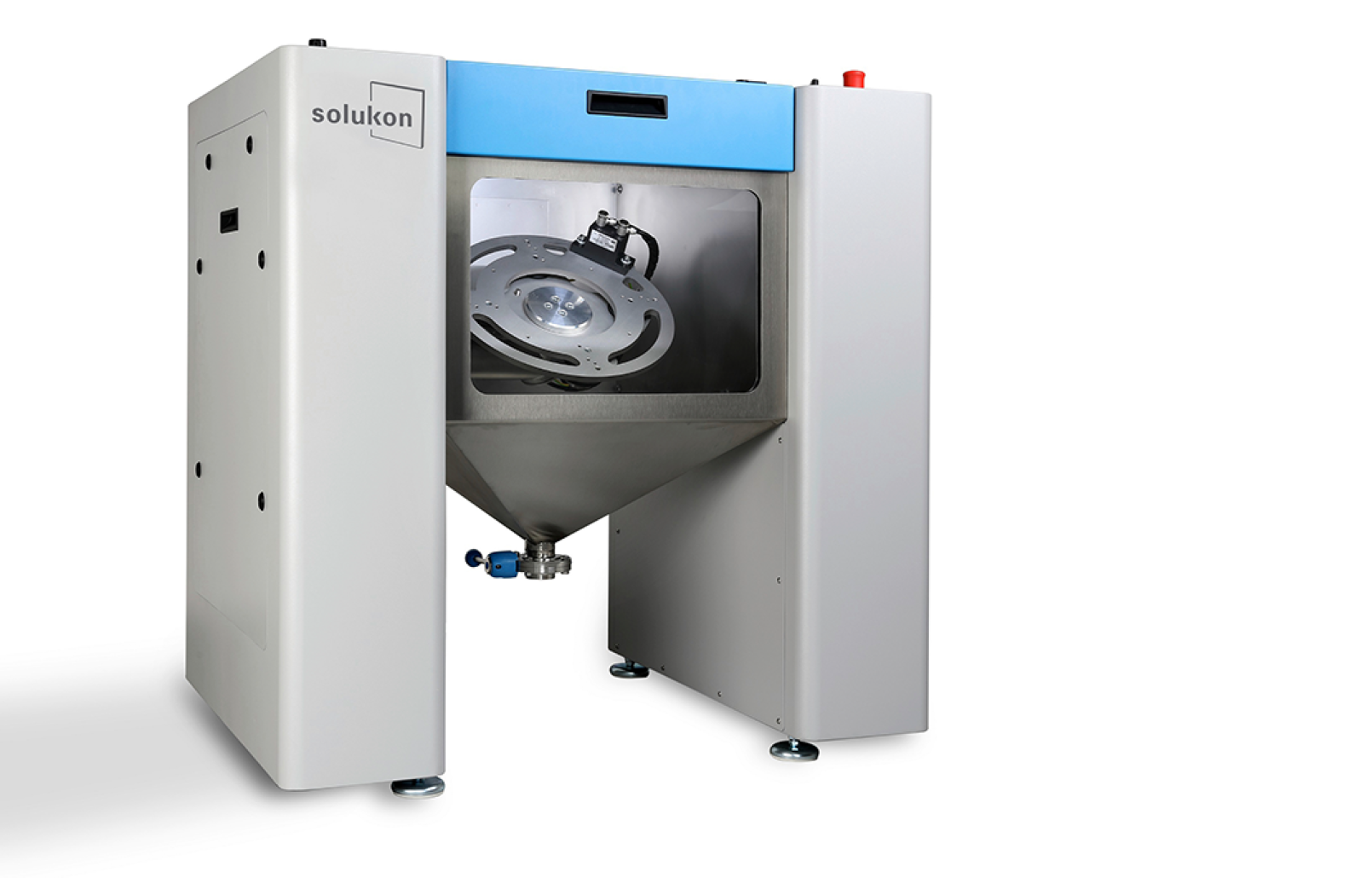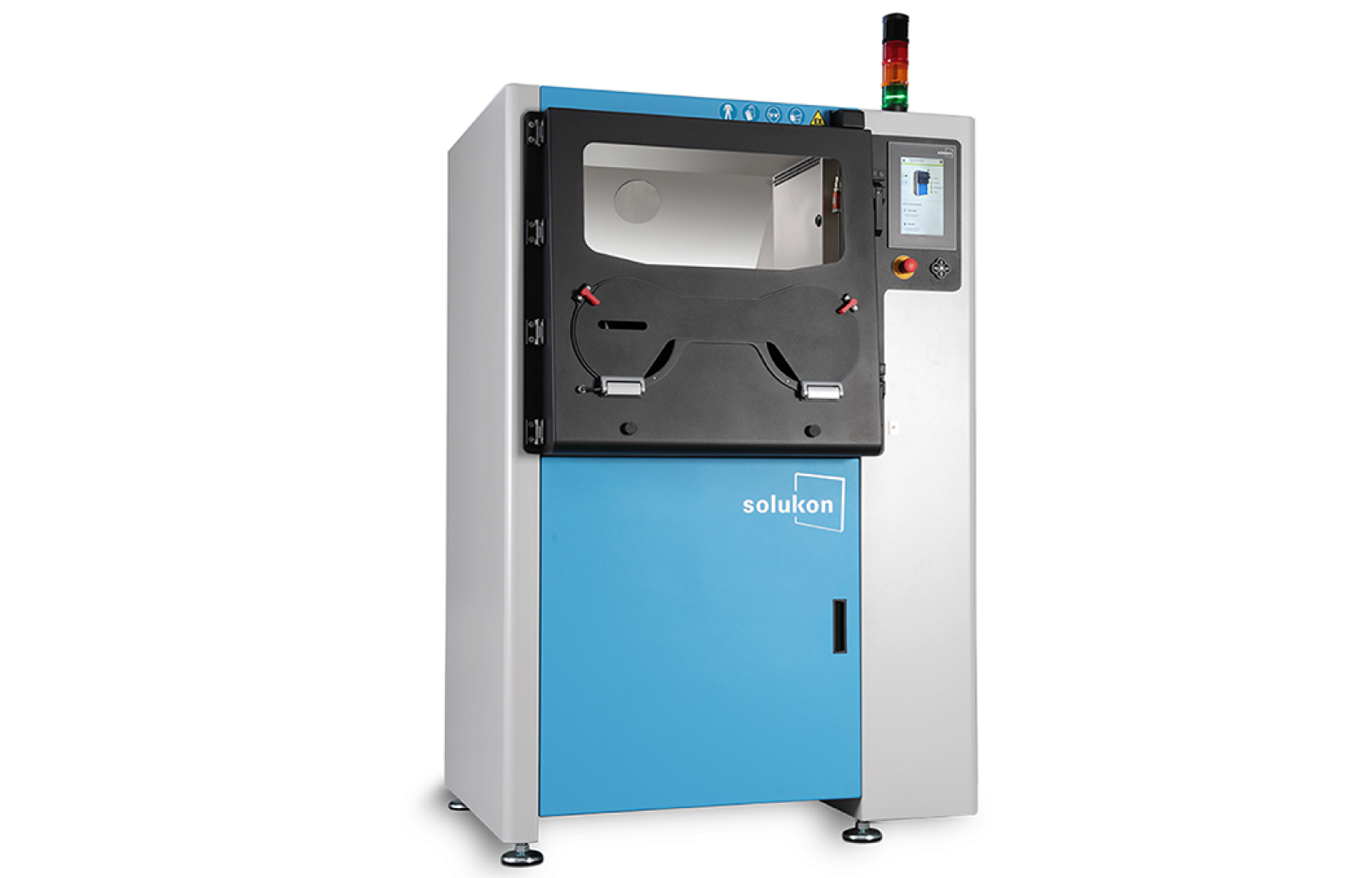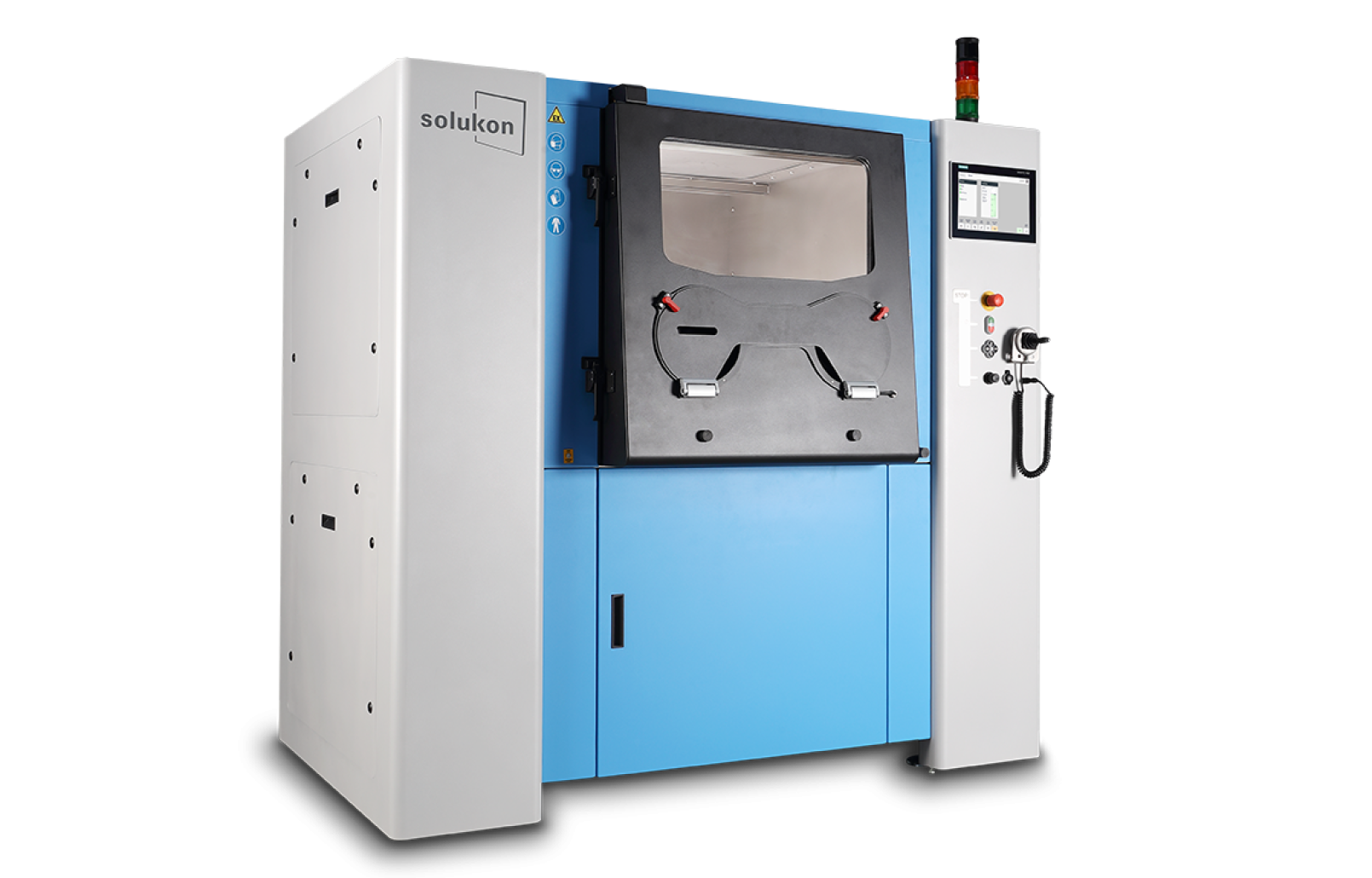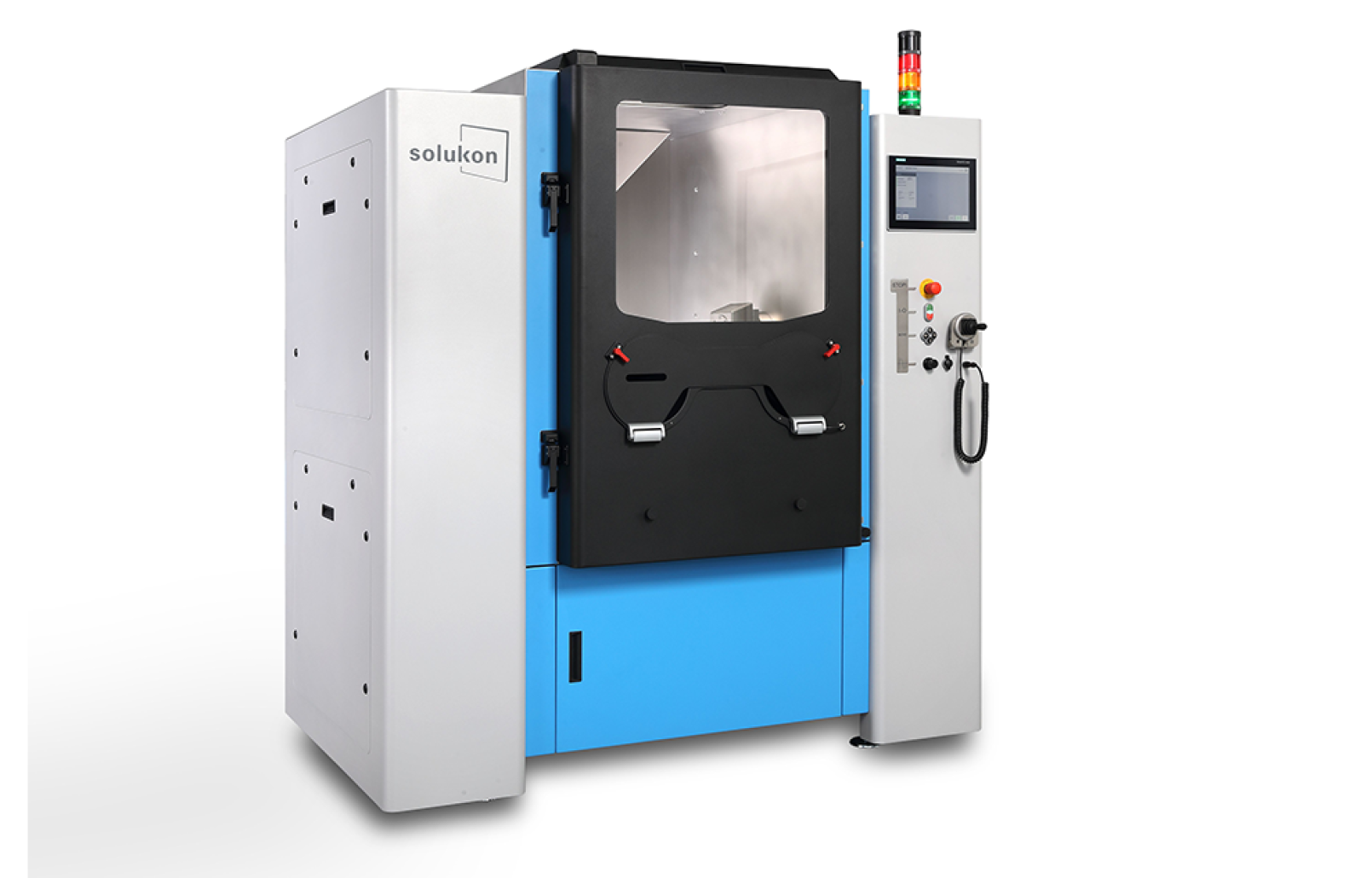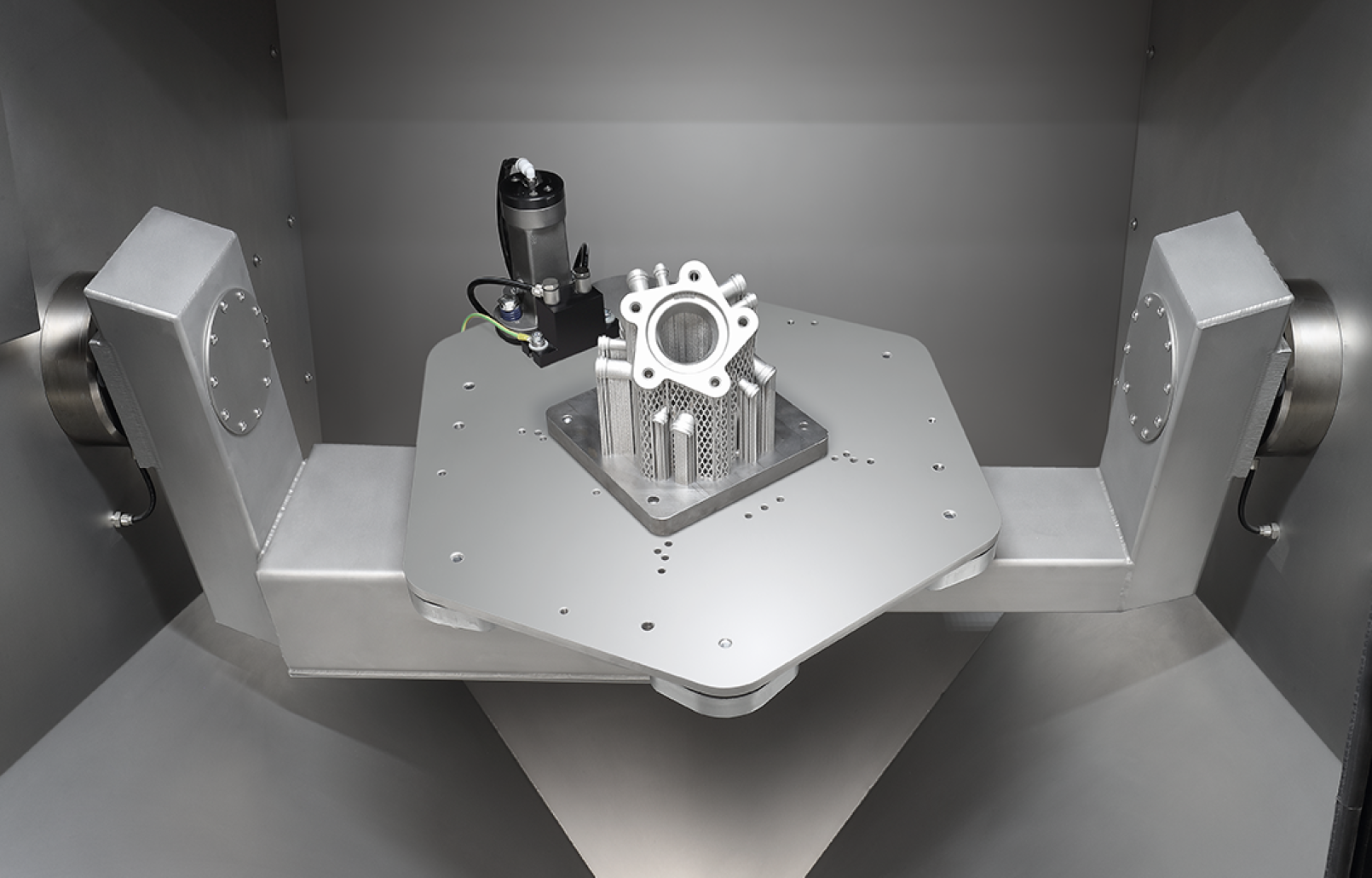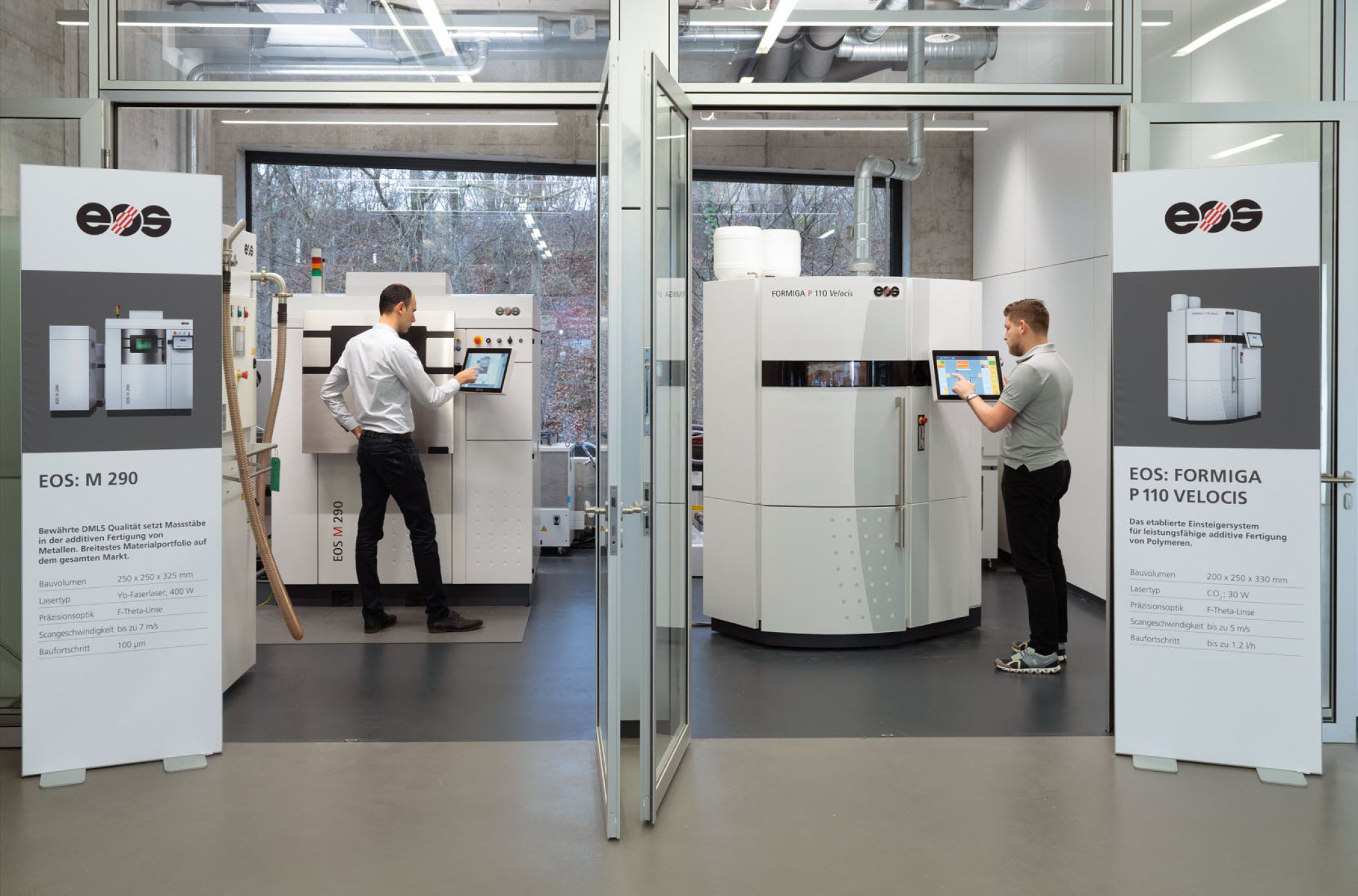Solukon – the post-processing market leader for depowdering
Depowdering made easy: Automated cleaning of laser-melted 3D printed parts
URMA is expanding its range of additive manufacturing machines in the post-processing sector with the Solukon depowdering systems. Solukon was the first company in the world to develop an automated solution for component cleaning: Smart Powder Recuperation technology SPR®.
Smart Powder Recuperation technology
Solukon depowdering systems are compatible with all powder-based 3D printers. The various post-treatment systems differ mainly in the size of the parts to be cleaned and the movement options of the swivel arms.
Starting with the entry-level model SFM-AT200, through SFM-AT350 for medium-sized components and the SFM-AT-800-S system, which is suitable for complex components, to the SFM-AT1000-S depowdering system for particularly large components.
Depowdering
Automatic depowdering of beam-melted metal components
For 3D printed metal parts, URMA offers Solukon, a wide range of systems for automatic powder removal. All machines are based on the Solukon Smart Powder Recuperation technology SPR®: Rotations and targeted vibration excitation ensure that powder can escape from the finest internal channels.
Solukon systems can quickly and efficiently de-powder complex metal components such as heat exchangers. By inerting in a protected process chamber, Solukon systems are also approved for reactive materials such as titanium and aluminum. Solukon thus sets the highest standards for industrial depowdering of additively manufactured metal components. Read more about depowdering components here.
SFM-AT200 – the entry-level model
The most compact solution to efficiently and thoroughly clean beam-melted metal components is the SFM-AT200. It meets the highest safety, functional and durability requirements. The depowdering system is space-saving in design and ideal for medical components and laboratory applications.
SFM-AT350 – for medium-sized components
The SFM-AT350 is suitable for medium-sized beam-melted metal parts. The system supports components weighing up to 132.28 lb. The SFM-AT350 has a large chamber volume and great freedom of movement. Complex motion sequences can be programmed quickly and easily.
SFM-AT800-S – for complex components
The SFM-AT800-S is the flagship of the depowdering systems and is suitable for highly complex metal components with a height of up to 600 mm. Even complex components with internal channels are freed from powder completely automatically and efficiently.
SFM-AT1000-S – pro version for particularly large components
The SFM-AT1000-S is an automatic depowdering system for large and heavy metal components weighing up to 1763.7 lb. and up to 1 m in height. This makes it the ideal system for the aerospace industry, which has particularly high post-processing requirements.
Smart Powder Recuperation SPR
SPR® enables fully automated cleaning of 3D printed metal parts in a protected atmosphere. Through automatic rotations around two axes and targeted oscillation excitation (vibration), the powder becomes "flowable", so that even narrow openings and internal channels become powder-free.
Get your free white paper now!
Solukon: Automated depowdering in the medical technology sector

It’s not just in the aerospace sector and other sectors that manufacture particularly complex parts using additive processes that demand for automated depowdering is increasing. More and more companies in the medical technology sector require automated solutions – the need for full transparency, certification and occupational health and safety are the essential motivating forces.
URMA is an expert in 3D printing – from initial consultation to quality inspection
inspection
Additive manufacturing enables a high degree of flexibility, effectiveness, automation and process safety, as well as the traceability of production. To ensure successful industrialization, the entire process chain from design, optimization, production, post-processing – and all the way to quality inspection – must be taken into account.
